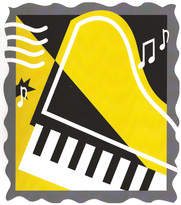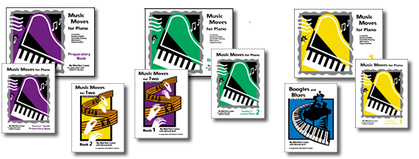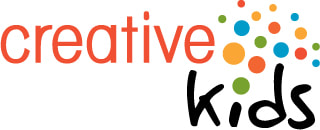Music Moves for Piano
Introduction and Philosophy

Music Moves for Piano applies Edwin E. Gordon's Music Learning Theory (also known as theories of audiation) to piano instruction. Music Moves for Piano builds on the revolutionary thinking of Orff, Dalcroze, Suzuki, Kodaly and Taubman. From the beginning of lessons, students learn how to audiate while they develop keyboard performing skills.
Music is multi-dimensional, but research indicates that students best learn to understand music by their ability to audiate tonal content within the context of a tonality and rhythm content within the context of a meter.
Gordon provides learning sequences to help students acquire a vocabulary of tonal and rhythm patterns. A large pattern vocabulary is the foundation for becoming a musical thinker and performer who audiates, or hears music with understanding.
Extensive research about how the brain perceives and learns music provides answers to the following questions and many more:
The answer: These students have not learned how to think musically. They have not learned to ‘audiate’ music. Audiation is essential for developing musicianship. Audiation is to music what thought is to language and visualization is to what we see.
How do students learn to audiate? The process is the same as for learning language. From birth, we listen before we speak. Then we begin to think, speak, and acquire a vocabulary. After a large thinking, speaking, and listening vocabulary is acquired along with much improvisational conversation, we learn to read and write. Aural learning precedes reading and writing.
Just as a language vocabulary provides the basis for understanding and communicating ideas and thoughts, a tonal and rhythm pattern vocabulary is the foundation for learning, performing, improvising, reading, writing, and understanding music.
Movement and singing are important in the pattern learning process. Rhythm is based on body movement and singing develops tonal audiation.
Functional rhythm and tonal patterns are the "content" of music. Patterns are learned in the "context" of a meter or a tonality. Patterns have meaning, or function, and are organized in categories that are learned in a certain order, or sequence.
Rhythm patterns are chanted without pitch and are in the context of a meter: duple, triple, or something else. Rhythm patterns are most commonly two or four durations and are organized into six categories, including rest, tie, and upbeat patterns.
Tonal patterns are sung without rhythm and are in the context of a tonality: major, minor, or other tonalities (modes). Tonal patterns are usually two or three pitches and function as tonic, dominant, subdominant, and so forth.
Patterns within the context of a meter or tonality make musical sense. Music notes have meaning only when they are part of a pattern that is in a context.
Naming individual notes, intervals, and chords or naming lines and spaces and counting are ways of learning about music that do not relate to a tonal or rhythm context. This type of learning process is intellectual decoding and cannot be understood aurally. For example, play an A Major cadence, then play a tonic A perfect-5th. Next, play a D Major cadence, then play a dominant A perfect-5th. The sound of tonic is not the same as the sound of dominant. Context makes a difference.
Through sequenced pattern instruction, piano students learn two instruments: a performing instrument and an audiation instrument. The ear and the mind must learn to audiate before the eyes can read music notation with comprehension. If this does not happen, there most likely will be mental confusion when performing, listening to, or reading music.
Music Moves for Piano was created to achieve the goal of music literacy through the development of audiation skills and performing skills. Now, in the 21st century, tools are available to teach piano as an aural/oral art.
Music is multi-dimensional, but research indicates that students best learn to understand music by their ability to audiate tonal content within the context of a tonality and rhythm content within the context of a meter.
Gordon provides learning sequences to help students acquire a vocabulary of tonal and rhythm patterns. A large pattern vocabulary is the foundation for becoming a musical thinker and performer who audiates, or hears music with understanding.
Extensive research about how the brain perceives and learns music provides answers to the following questions and many more:
- Why can students play difficult repertoire and not be able to play "Happy Birthday" without music?
- Why can some students play cadences fluently, yet be unable to improvise on tonic and dominant chords?
- Why can many adults, after years of study, only play a few pieces that they learned in high school?
- Why are so many adults unable to read unfamiliar music or accompany singers and instrumentalists?
- Why do creating and improvising seem impossible to many adults who can read music?
The answer: These students have not learned how to think musically. They have not learned to ‘audiate’ music. Audiation is essential for developing musicianship. Audiation is to music what thought is to language and visualization is to what we see.
How do students learn to audiate? The process is the same as for learning language. From birth, we listen before we speak. Then we begin to think, speak, and acquire a vocabulary. After a large thinking, speaking, and listening vocabulary is acquired along with much improvisational conversation, we learn to read and write. Aural learning precedes reading and writing.
Just as a language vocabulary provides the basis for understanding and communicating ideas and thoughts, a tonal and rhythm pattern vocabulary is the foundation for learning, performing, improvising, reading, writing, and understanding music.
Movement and singing are important in the pattern learning process. Rhythm is based on body movement and singing develops tonal audiation.
Functional rhythm and tonal patterns are the "content" of music. Patterns are learned in the "context" of a meter or a tonality. Patterns have meaning, or function, and are organized in categories that are learned in a certain order, or sequence.
Rhythm patterns are chanted without pitch and are in the context of a meter: duple, triple, or something else. Rhythm patterns are most commonly two or four durations and are organized into six categories, including rest, tie, and upbeat patterns.
Tonal patterns are sung without rhythm and are in the context of a tonality: major, minor, or other tonalities (modes). Tonal patterns are usually two or three pitches and function as tonic, dominant, subdominant, and so forth.
Patterns within the context of a meter or tonality make musical sense. Music notes have meaning only when they are part of a pattern that is in a context.
Naming individual notes, intervals, and chords or naming lines and spaces and counting are ways of learning about music that do not relate to a tonal or rhythm context. This type of learning process is intellectual decoding and cannot be understood aurally. For example, play an A Major cadence, then play a tonic A perfect-5th. Next, play a D Major cadence, then play a dominant A perfect-5th. The sound of tonic is not the same as the sound of dominant. Context makes a difference.
Through sequenced pattern instruction, piano students learn two instruments: a performing instrument and an audiation instrument. The ear and the mind must learn to audiate before the eyes can read music notation with comprehension. If this does not happen, there most likely will be mental confusion when performing, listening to, or reading music.
Music Moves for Piano was created to achieve the goal of music literacy through the development of audiation skills and performing skills. Now, in the 21st century, tools are available to teach piano as an aural/oral art.
|
For more information on lessons using Music Moves for Piano feel free to download a brochure to the right.
|
| ||||||
Music Moves for Piano
by Marilyn Lowe in cooperation with Edwin E. Gordon

Music Moves for Piano is a new piano series for the 21st century that builds on Orff, Kodaly, Suzuki, and Dalcroze and applies Edwin E. Gordon's Music Learning Theory to the teaching of piano. Music Learning Theory is the same as Gordon's "theories of audiation" and is a sequential learning process that guides students to hear music with understanding. The music learning process follows the same approach as children learn language: listen, speak/perform, think/improvise, read and write.
This piano series can be used for beginning and transfer students of all ages and levels. The purpose of Music Moves for Piano is to help students learn how to audiate and how to play the piano. The series provides a solid foundation for developing music literacy.
Supplemental solo repertoire, first learned by rote then from notation, is essential for learning with this piano series and for individualizing instruction. Supplemental repertoire is suggested and selected by the teacher to match the student's skills.
In Music Moves for Piano students learn to:
Music Moves for Piano:
For more information on this series, click here.
This piano series can be used for beginning and transfer students of all ages and levels. The purpose of Music Moves for Piano is to help students learn how to audiate and how to play the piano. The series provides a solid foundation for developing music literacy.
Supplemental solo repertoire, first learned by rote then from notation, is essential for learning with this piano series and for individualizing instruction. Supplemental repertoire is suggested and selected by the teacher to match the student's skills.
In Music Moves for Piano students learn to:
- Improvise, play by ear, transpose, and harmonize
- Compose, arrange, read, and write music notation
- Sing and play - accompany singers and instrumentalists
- Perform with comfort and fluency in a variety of social settings
- Play with technical ease and freedom from muscular tension
- Listen to and perform music with understanding - students audiate
- Think about music in the context of a meter and a tonality
- Become independent music thinkers
Music Moves for Piano:
- Is based on research
- Is versatile and adaptable - appropriate for all ages
- Helps students to learn music as an aural art - 'sound before sight'
- Builds lifetime skills through movement, chanting, and singing
- Is creative - students make music from the beginning
- Develops the entire musician
- Internalizes improvisation and audiation skills
For more information on this series, click here.
For more information on this approach, or to register for lessons, please feel free to email me to set up a time when we can meet.
|
Gregory Chase Music Studio is proud to work with Creative Kids Saskatchewan.
For families unable to meet the lesson fees, funds may be available from Creative Kids Saskatchewan. Visit www.CreativeKidsSask.ca for details. |
